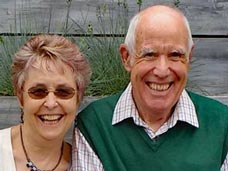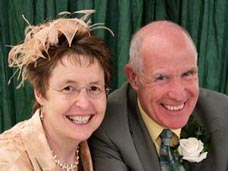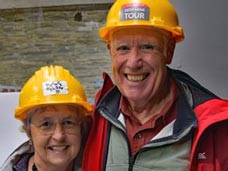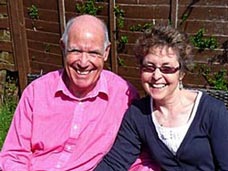 |
 |
 |
 |
Audio
Liz (and her sister Chris) is a member of a recorder group that meets alternate Tuesdays. In July they held a concert which John recorded. If you'd like to listen to the recording simply click on the file name, if you'd like to download it - which you're welcome to do, click on the file name with the right mouse button and select Save link as... and save the file on your computer.
If you'd like to buy a copy of the CD please contact us - it costs £5.00 with all the money going to IMC (In Ministry to Children).
- David Thompson: Jubilee Waltz
- William Byrd: Lord Willobie’s Welcome Home
- Country Dance Tunes:
- Scott Joplin: The Entertainer
- Elizabethan Dances: Gallyard; Pavana; Allemana d’Amor
- John Coperario: Masque Dace – Gray’s Inn, the First
- Eileen Silcocks: West Country Suite
- Johann Strauss: Sangerlust Polka
The Musicians: Pauline Caterall, Mary Edwards, Chris Payne, Anne Raison, Liz Studd, Sue Tallamy, Sandra Thacker
Playing: descant, treble, tenor and bass recorders
Mary Edwards supplied the following notes:
David Thompson (born 1944): Jubilee Waltz – written to celebrate the Golden Jubilee of the Society of Recorder Players in 1987.
William Byrd (1539 or 40 - 1623): Lord Willobie’s Welcome Home – Byrd was a composer to Queen Elizabeth I and this piece was originally written for virginals – the equivalent of the upright piano played in the home.
Country Dance Tunes: These three come from a book of dance tunes called “The English Dancing Master” made by Playford in 1650. These are free arrangements of the originals.
Scott Joplin (1868 – 1917): The Entertainer. Joplin was an American composer and pianist and was known as the King of Ragtime. His first publication was the Maple Leaf Rag. The Entertainer is probably his best-known work and was published in 1902.
Elizabethan Dances: All anonymous and come from a set found written in the blank pages of a set of church music parts. They are probably the work of musicians in the household of the earl of Arundel at the Nonsuch Palace around 1560. Galliard was Queen Elizabeth I’s favourite dance, she would dance five or six times a day when in her 50’s in order to prove that she was still active. Pavane is a slow dance and Allemend a German dance.
John Coperario (c1575 – 1626): Masque Dance. Coperario’s real name was John Cooper - when he went to Italy in about 1664 he changed it to Garanni Coperario. These pieces come from Francis Beaumont’s Masque of the Inner Temple and Graye’s Inn before the King and Queen in the Banqueting House at Whitehall on the 20 February 1613. A masque was an entertainment with poetry, music and elaborate sets.
Eileen Silcocks (born 1954): West Country Suite. This was commissioned for the national Festival of the Society of Recorder Players in 2001. It is an arrangement of traditional folk tunes: Heave Away, Keys of Canterbury, The Cuckoo, The Coast of High Barbary and ending with Heave Away again.
Johann Strauss Jnr (1825 – 1899): Sangerlust Polka. Johann came from a family of Austrian dance musicians and is known as the King of the waltz. Sangerlust means Singer’s Joy.
The making of Blonde on Blonde